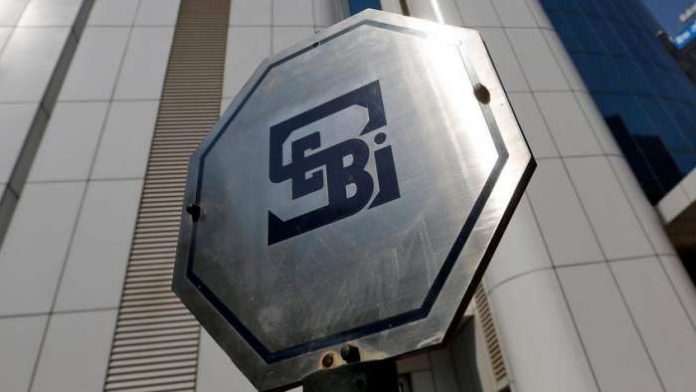This article has been written by Anant Roy.
It has been published by Rachit Garg.
Table of Contents
Introduction
Sweat equity shares are those shares which are issued by a company to its employees for their valuable work for the company. It is an incentive or reward companies give to their employees to keep them motivated. According to section 2 (88) of the Companies Act, 2013, Sweat Equity shares are those shares that a company issues to its directors or employees at a discount or for a consideration other than cash. In India, sweat equity shares issued by unlisted companies are governed by Section 54 of the Companies Act, 2013, along with the Companies (Share Capital and Debentures) Rules, 2014. For the listed companies, before August 2021, share-based employee benefits and the issue of sweat equity were governed separately by the SEBI (Share Based Employee Benefits) Regulations, 2014 and SEBI (Issue of Sweat Equity) Regulations, 2002 (hereinafter referred to as the previous regulations). On August 13th, 2021, the Securities Exchange Board of India (SEBI) came up with a new regulation, the SEBI (Share Based Employee Benefits & Sweat Equity) Regulation, 2021(new regulation), which was a consolidation of the previous two regulations. This article tries to compare the previous regulations and the new regulation and tries to analyse how the new regulation has been refurbished to ease compliance and accommodate changing dynamics of business.
Widened scope of an “employee”
One of the most significant changes brought about by the new regulation is in the definition of “employee.” Unlike the previous regulation, as per regulation 2(i) of the new regulation, the definition of employee does not include permanent employees. It simply includes employees as designated by the company, working in India and outside India, and the directors of the company. It explicitly includes non-executive directors in the scope of employees, unlike the previous regulation.
As per the new definition of employee, all the listed companies can provide share-based benefits to their employees or any employee of a group company, its subsidiary or associate company, or any employee of the holding company as well. Further, the employees covered by Joint Ventures are also eligible for the benefits. The rationale behind including employees of Joint Ventures is because of the definition of the term “associate” as per Section-2(6) of the Companies Act, 2013, which includes joint ventures in it.
Furthermore, from chapter IV of the new regulations, the sweat equity regulations have been added, and regulation 29 defines employees for the chapter. In this definition, unlike the previous regulation for sweat equity, the scope of employment has been increased by omitting the permanent employee from it. Furthermore, unlike share-based benefits, sweat equity benefits can be provided to independent directors because they are not expressly prohibited from receiving them.
The omission of “permanent employee” from the definition of employee has also allowed companies to provide share-based benefits and sweat equity to their contract-based employees, gig employees, freelance employees, etc.
Change in the scheme implementation route
Another significant change which has been made in the regulation is regarding the implementation of the scheme. According to Regulation 3 (1) of the new regulation, the company may switch the route of implementation of the scheme from through a trust to directly implementing it through the company or vice versa. If during the implementation the company wants to change the route, and if the prevailing circumstances warrant such a change, then it shall get prior and fresh approval from the shareholders by a special resolution. Such a detour shall not be detrimental to the shareholders’ interests.
In the previous regulation, companies did not have the privilege of changing the route of implementation immediately before the implementation of the scheme. The new rule gives the company the chance to look at the current situation and choose the best way to put the plan into action.
The Compensation Committee
In the new and previous regulations, there is a mandate for the formulation of a compensation committee for the administration and supervision of the scheme if the scheme is being implemented by the company and not by the trust. The compensation committee shall include members of the Board of Directors as per regulation 19 of the SEBI (Listing Obligation and Disclosure Requirement) Regulation, 2015 (SEBI(LODR)). The previous regulation had a mandate to constitute a compensation committee, which had members of the board of directors as provided in Section 178 of the Companies Act, 2013.
In India, listed companies are governed by the SEBI (LODR) and, as per regulation 19, a listed company has the mandate to constitute a Nomination and Remuneration Committee (NRC). To ease the complaints, the new regulation explicitly mentions and allows the NCR to be designated as the compensation committee.
Utilization of excess monies
Regulation 8 of the new regulation states that the excess money in the trust should be used in the event of the winding up of the scheme having been implemented by the company. According to the previous regulation, any excess funds remaining in the trust must be used to repay loans or distributed to employees based on the compensation committee’s recommendation. In addition to that, the new regulation also recommends the transfer of excess funds to other schemes under the same regulation, subject to prior approval from the shareholders.
According to the regulation change, the trust funds are intended for the benefit of employees. A change has been made to ensure the funds benefit the employees and are not used for any other purpose.
Secretary of state audit report
In both the regulations, there is a mandate for all the companies implementing any scheme under the regulation to provide an audit report to the shareholders at every general meeting, to show that the schemes are being implemented in accordance with the regulation and the resolution.
To end the ambiguity Regulation 13 of the new regulation explicitly mentions that an audit report has to be obtained only from a Secretarial Auditor. The rationale behind mentioning only the secretarial auditor is that the secretarial auditor is more familiar with these laws and regulations. Further, a secretarial auditor also has a mandate under the SEBI (LODR) Regulation to furnish a secretarial audit report annually.
Sweat equity and the laws governing it
The issue of sweat equity, as per the previous regulation, was governed by section 79A of the Companies Act, 1956. It was interesting to see that until August 2021, the issue of sweat equity was governed by a law that was repealed back in 2013. But with the new regulation, the issue of sweat equity will be governed by section 54 of the Companies Act, 2013.
Shares of equity
The previous regulation did not regulate the quantum of issue of sweat equity shares. As per Regulation 31 of the new regulation, no listed company can issue more than 15% of its existing paid-up equity share capital in a year. At no time shall the issue of sweat equity share capital exceed 25% of the paid-up capital of equity shares. Also, the company listed on the Innovator Growth Platform (IGP) can issue no more than 15% of its paid-up equity share capital in a financial year and not exceed 50% of the paid-up equity and only for 10 years from the date of incorporation of the company.
Lock-in period
A lock-in period in any share or convertible debt instrument is unappealing, especially when it lasts three years. According to the previous sweat equity regulation, there was a lock-in period of 3 years for sweat equity holders. With the new regulation, the sweat equity shall be locked in for a period specified for preferential issues in the SEBI (Issue of Capital and Disclosure Requirements) Regulation, 2018 (ICDR Regulation).
As per the latest amendment in Regulation 167 of the ICDR Regulation, any sweat equity held by any promoter or promoter group shall have a lock-in period of 18 months and any employee other than the promoters shall have a lock-in period of 6 months.
Conclusion
The new regulation is not just a consolidation of the previous regulations for share-based benefits and sweat equity; it is also an attempt to rationalise the previous regulations from both the perspective of the company and the employees. For example, an audit report, particularly from a secretarial auditor, mentioning the quantum of shares to be issued, changing the governing law for the issue of sweat equity, and reducing the lock-in period are steps towards rationalising the regulations. As part of the changes made to reduce unnecessary compliance on the part of the company, NRC will be allowed to serve as a compensation committee, the scheme implementation route can be changed according to current circumstances, and new businesses listed on the IGP will be permitted to issue sweat equity up to a maximum of 50%. On the other hand, widening the scope of employees and allowing the use of excess money in other share-based benefit schemes are some of the changes that are made for the well-being of employees.
A small drawback with regards to the definition of employee has attracted a lot of attention. It is imperative to understand that the share-based benefits are available only to those employees who are recognised as employees by the company for the scheme. Though the scope of employees has been widened, it does not compel the company to consider any contract-based employee or a gig worker under the scheme.
With the advent of the gig economy in India, the debate for their rights has spread from the common people to the Supreme Court of India and to the Parliament. The present amendment is also a step taken by the regulators to cater the growing gig economy. But it is imperative to understand that the change in the regulation is only for the listed companies. The Companies (Share Capital and Debentures) Rules, 2014 still recognises employees as “Permanent Employees”. But the gig economy is equally rampant in the unlisted companies as well. The very purpose of providing equal rights to the employee remains unfulfilled if there is a distinction in the definition of employees on the basis of companies being listed or unlisted.
References
- https://www.indiacode.nic.in/handle/123456789/2114?sam_handle=123456789/1362
- https://www.sebi.gov.in/sebi_data/attachdocs/apr-2017/1492085873402.pdf
- https://www.sebi.gov.in/legal/regulations/apr-2017/sebi-share-based-employee-benefits-regulations-2014-last-amended-on-march-6-2017-_34689.html
- https://www.sebi.gov.in/legal/regulations/sep-2002/sebi-issue-of-sweat-equity-regulations-2002_34635.html
- https://www.sebi.gov.in/legal/regulations/aug-2021/securities-and-exchange-board-of-india-share-based-employee-benefits-and-sweat-equity-regulations-2021_51889.html
- https://www.sebi.gov.in/legal/regulations/jan-2020/securities-and-exchange-board-of-india-listing-obligations-and-disclosure-requirements-regulations-2015-last-amended-on-january-10-2020-_37269.html
- https://www.mca.gov.in/Ministry/pdf/Companies_Act_1956_13jun2011.pdf
- https://www.sebi.gov.in/legal/regulations/sep-2018/securities-and-exchange-board-of-india-issue-of-capital-and-disclosure-requirements-regulations-2018-_40328.html
 Serato DJ Crack 2025Serato DJ PRO Crack
Serato DJ Crack 2025Serato DJ PRO Crack











 Allow notifications
Allow notifications



